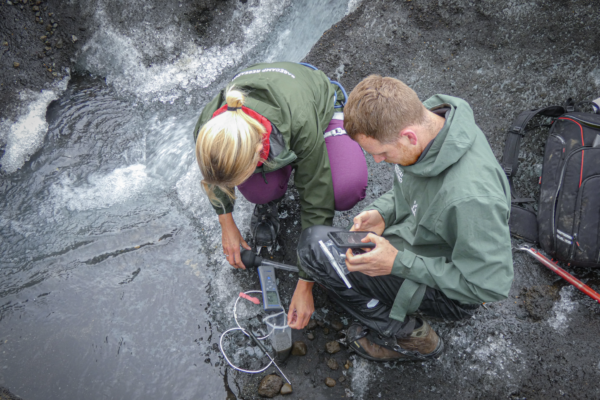Consumers in the Western world have grown accustomed to an ever-present supply of low-cost, low-value goods. From single-use plastics to fast fashion, bulk food, and cheap electronics, we buy, briefly use, and throw out goods before their useful life has been realized. The average American produces around 1,800 pounds of trash each year; almost 5 pounds per person per day. This unsustainable cycle fails to capture the potential economic value of transforming this “waste” into a novel resource.
Adopting circular economy principles can help build more sustainable products and systems, and evolve us beyond today’s linear take-make-waste economy. At GreenBiz Group’s Circularity conference in Seattle this year, sustainability leaders from diverse industries gathered to explore how to fast-track emerging solutions, and the many regulatory tailwinds necessary for the circular economy’s success. From EPR textile legislation in California to the distinct approaches the US and EU take in recycling and waste management, here are six highlights from the gathering.
California’s Fashion Industry Faces an Impending Transformation with SB707:
California’s Responsible Textile Recovery Act of 2023 (SB707) heralds a significant change in the fashion industry. With the fashion sector accounting for 10% of global carbon dioxide emissions and textiles now representing the fastest-growing component of California’s landfills, SB707 mandates producers to fund an extended producer responsibility program (EPR) for textiles, enabling their recycling and repair. This legislation aligns with California’s commitment to addressing waste and complements laws passed in 2022 (considered a landmark year) targeting packaging and battery recycling, as well as new action to shift the burden of waste from consumers back to producers. Such a program could have significant impact on supply chains by ensuring standardization, compliance, traceability, and importantly, by fostering improved collaboration across textile manufacturers, recyclers, and retailers.
Waste Management & Recycling Strengths Differ Between the EU and the US:
The US continues to look to the EU for guidance on recycling and waste management, particularly in terms of regulation. The EU serves as an exemplar in several areas, including eco-design principles, recycling rate requirements, and the implementation of digital product passports. Even advanced recycling regions in the US, such as the Bay Area, lag behind Europe in waste management and recycling practices. However, while the EU takes the lead, the US may have an advantage in embracing next-generation methods like chemical recycling or waste gasification. This is thanks to the limited presence in the US of established infrastructure that the EU will have to migrate from, like waste-to-energy plants. Although the Circularity conference devoted minimal attention to discussing recycling and waste management on a systemic level, the question of how we handle the inevitable waste we produce remains crucial and necessitates thoughtful consideration.
In the Hierarchy of Plastic Recycling Solutions, Not all Plastic Recycling Methods are Created Equal:
The hierarchy of plastic recycling solutions reveals large variations in the energy intensity and environmental impact of different methods. Mechanical recycling stands out as the preferred method, being the least energy-intensive and offering the best environmental outcomes. Following mechanical recycling, purification, depolymerization, and conversion methods are employed, each requiring additional resources and exhibiting higher energy intensity. However, it’s crucial to note that the efficacy of mechanical recycling depends on the cleanliness of the feedstock, and practical limitations exist within this approach. Conversion to fuel, such as gasification, should not be labeled as recycling due to its energy-intensive nature and the negative implications of transforming plastics into fuels, which release emissions once burned – this process is more accurately described as “downcycling.”
Consumer Culture Driving CE Solutions Demand & Adoption, Led by Gen Z:
Consumer culture plays a pivotal role in driving the demand and adoption of Circular Economy solutions. The circular economy is not only about product innovation, it’s about cultural change in how we use the items in our daily lives. This shift may be happening on the consumer level even more than it is with climate change solutions. The influence of Gen Z is particularly noteworthy; their commitment to addressing climate change surpasses that of previous generations, and their preferences and values should not be overlooked. According to the World Economic Forum, 93% of Gen Z respondents in the US say addressing climate change is critical for the future of the planet. The conference highlighted that businesses must make it easy for consumers to participate in circularity by designing for it, as well as for longevity and durability. Gen Z’s unique role in the circular economy cannot be overlooked.
“When I was younger I thought I could be a doctor or an astronaut to make positive change, but then I realized that working on supply chains could have just as big of an impact.” – Emerging Leaders Panelist
Challenges of Circularity Investing Require Holistic Thinking:
Investing in circularity presents unique challenges, including potential disconnects between investments and value generation (a theme that also emerged from our innovations in food waste dinner this spring). The value of longer-lasting products may benefit society and consumers, but not necessarily producers or investors. Blended finance, which combines private capital with public funding, can help bridge this gap and support projects that benefit society. Holistic thinking is crucial to advance the success of circular economy solutions and encompass the entire value chain. We must also acknowledge the need for regulatory tailwinds to incentivize circular practices, similar to how IRA legislation is pushing the clean energy transition forward.
If you’re a circular startup, we’d love to hear about your solutions. Please reach the Valo investment team at hello@valoventures.org.



